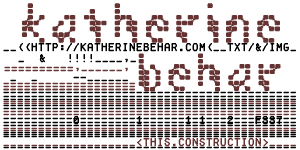Description
Building Blocks is a site-specific public performance and video project dealing with the architectural history of the Centrum Warenhaus. Located in the center of Dresden, the Centrum Warenhaus was a classic example of International-Style socialist architecture from the DDR. In 2007, the building was demolished to make way for a new shopping mall. In Building Blocks, four local dancers inhabited silver shapes modeled on elements from the missing building's distinctive aluminum "honey-comb" façade. The four traumatized fragments of the building briefly reconvened on their old ground, momentarily attempting to reassemble themselves. First congregating at the Centrum construction site, the shapes eventually dispersed and rolled away along the length of the Prager Strasse to the "Camouflash" exhibition site.
Statement
I made Building Blocks for an exhibition named after the Baudrillardian concept, "Camouflash," which I understand as a modern condition of wanting to blend in to an urban environment (a desire to be camouflaged) and simultaneously yearning to burst out and become visible (a desire for a "flash" of recognition). It is easy enough to understand ideas like Camouflash or urban evolution from the human point of view of city-dwellers. Where we are vulnerable, we build buildings to cover ourselves; for the same reason, we block them out. But camouflaging oneself means finding ways of being like the world at large. So, in the sympathetic spirit of camouflage, I want to conceive of a city's architectural history from the perspective of its buildings. What if urban changes were motivated not by humans' whims, but by buildings' psychologies? The city would reorder itself every time a building blushed with embarrassment and the landscape would shift again should a building desire, even momentarily, for its image to persist.
Additional information about the Centrum Warenhaus:
https://de.wikipedia.org/wiki/Centrum_Warenhaus_(Prager_Strasse)/ (In German)
http://www.das-neue-dresden.de/centrum-warenhaus.html (In German)
http://www.flickr.com/groups/centrumwarenhaus/ (Flickr Photos)










